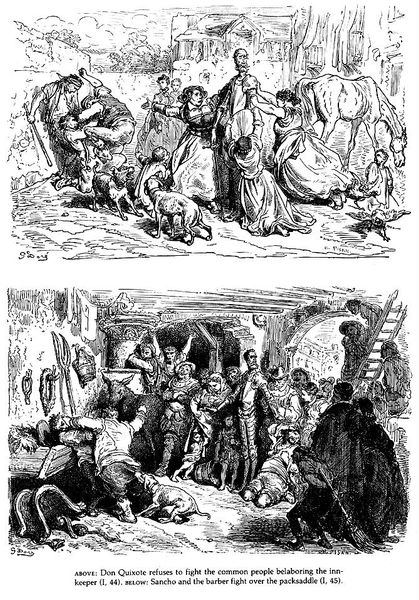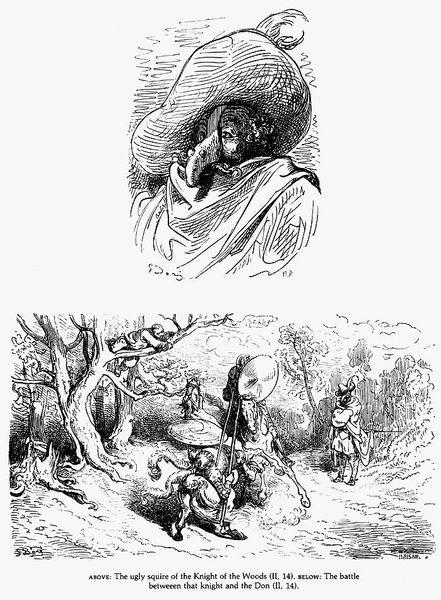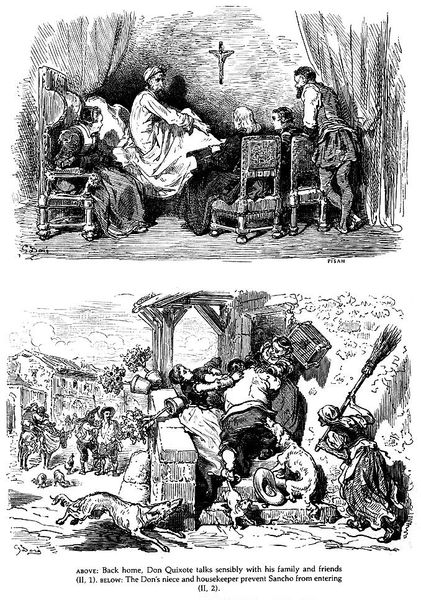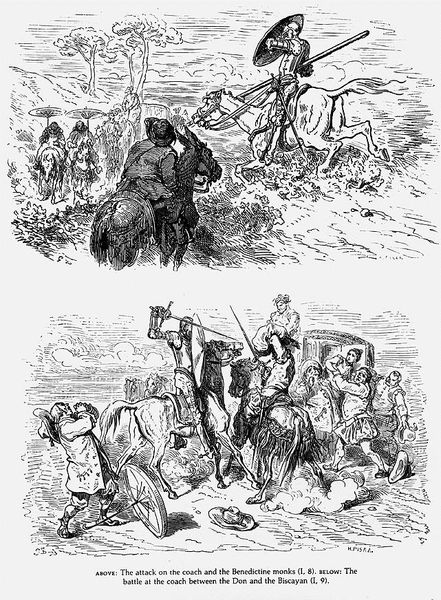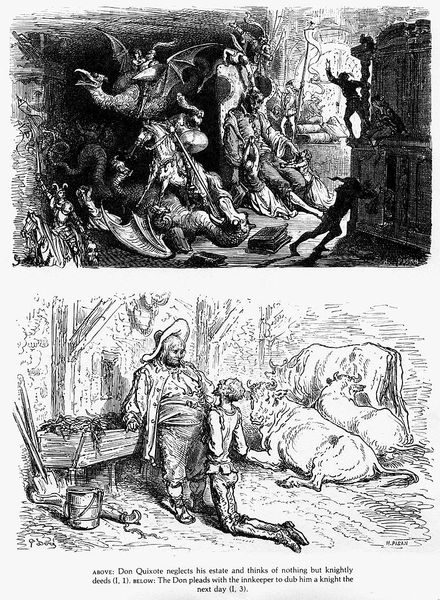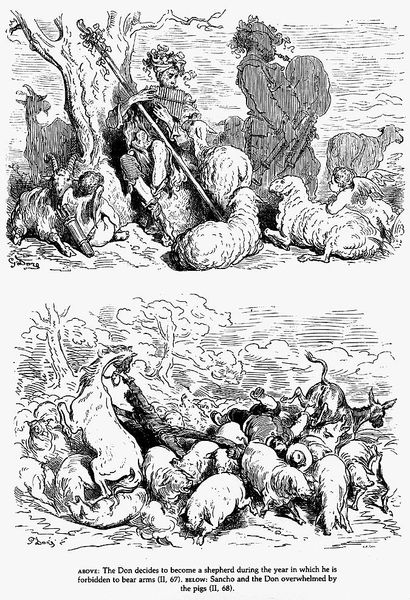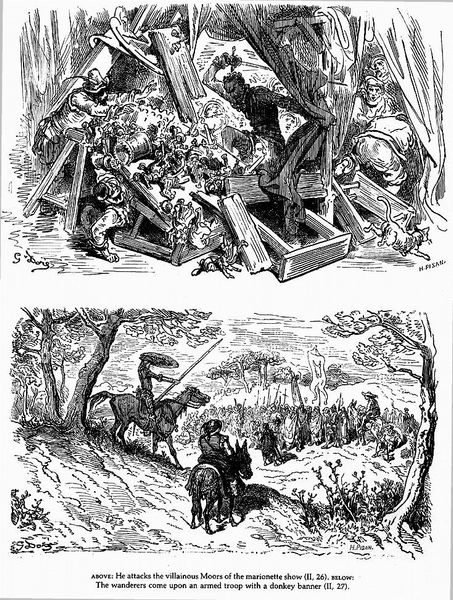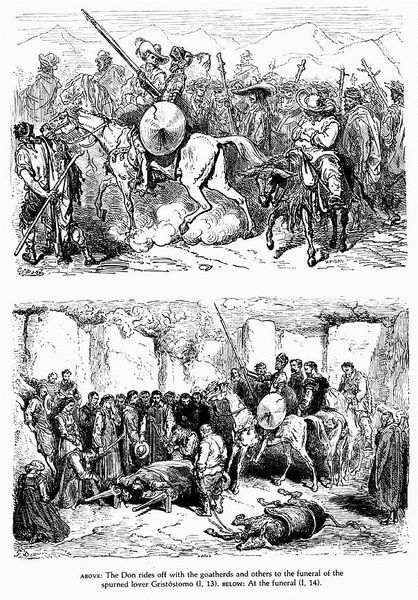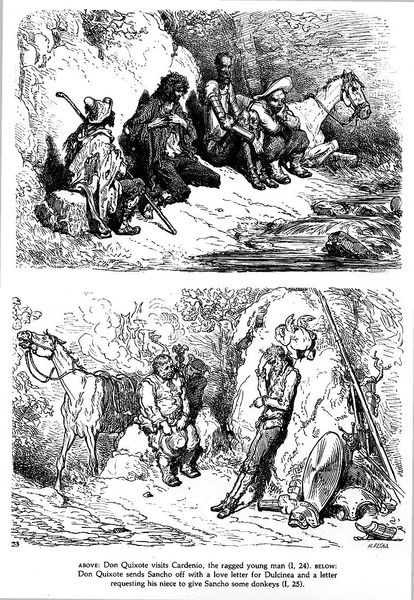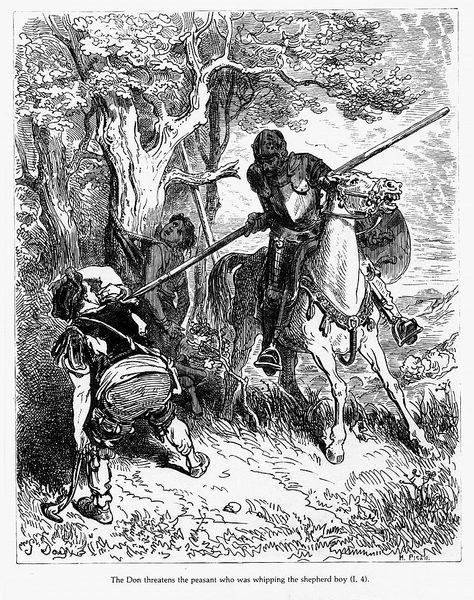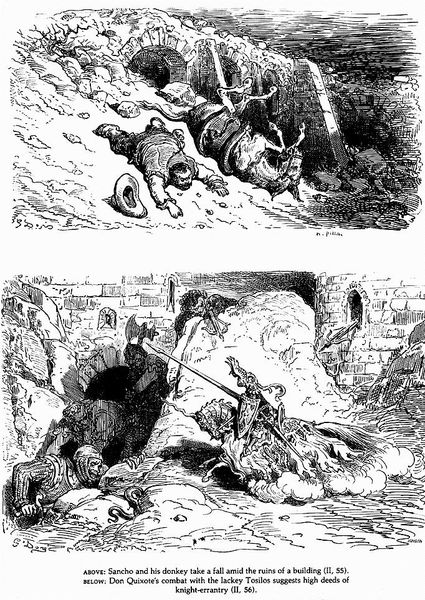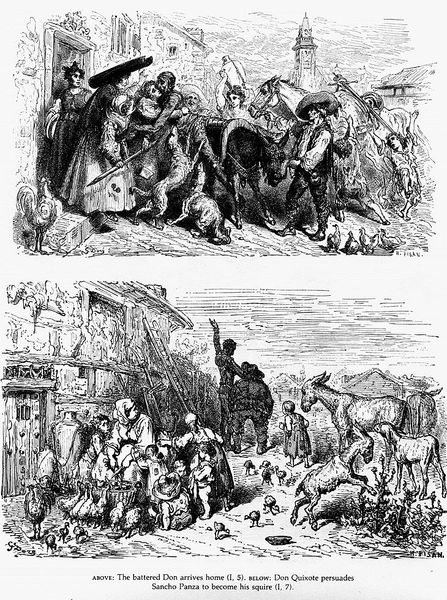
drawing, print, ink, woodcut, engraving
#
drawing
#
narrative illustration
#
medieval
#
narrative-art
# print
#
landscape
#
figuration
#
ink line art
#
ink
#
romanticism
#
woodcut
#
line
#
engraving
Copyright: Public domain
Curator: Looking at this engraving, I immediately sense a whimsical darkness. There's a striking contrast between the serious figures and the slightly absurd situations they find themselves in. Editor: This is "Don Quixote," a print by Gustave Doré. Though undated, it exemplifies Doré's celebrated work illustrating literary classics. The image, crafted through a combination of woodcut and engraving techniques, presents two distinct scenes relating to the narrative. Doré's illustrations, broadly speaking, democratized access to high-culture literature by creating these visually accessible stories through mass-produced prints. Curator: Absolutely. It's interesting how the separation of the scenes on one sheet creates almost a diptych, inviting us to compare the idealized heroism of Montesinos holding the heart with the ridiculous scene below. There's an irony there, isn't there, about the levels of seriousness we give to different narratives and different social classes? Editor: Precisely. Doré wasn't just visualizing Cervantes's text; he was interpreting it, filtering it through his own Romantic sensibilities. Considering the social commentary inherent in "Don Quixote," with its critique of societal norms and the fading aristocracy, Doré's art serves to reinforce this sentiment. The bottom scene could represent the chaos of reality that undermines grand narratives of upper-class culture, or perhaps an underlying satire towards lower classes. Curator: And even aesthetically, the fine detail applied to Montesinos’ regalia juxtaposed against the cartoonish qualities of the braying men beneath emphasizes that class disparity, doesn't it? Almost mocking the absurdity of their quest while sentimentalizing the aristocratic ideal. Editor: Yes, and think about where prints such as these were consumed. They found their way into books, of course, but also as individual prints, often decorating middle-class homes. This act of viewership further democratizes these archetypes and invites more debate about the cultural impact these prints were making within the public sphere. Curator: So true! I hadn't considered it in that context. Thinking about accessibility of prints also calls to mind the way women and queer people may have engaged with these visuals; as these kinds of stories and images circulate through culture, different marginalized people would’ve surely found nuanced opportunities for identification with the central narrative, despite what may read as its surface-level themes and figures. Editor: Absolutely, reflecting on this image allows us to explore so much about social satire, reception, and Doré’s talent for embodying Cervantes' poignant tale in visual form.
Comments
No comments
Be the first to comment and join the conversation on the ultimate creative platform.
